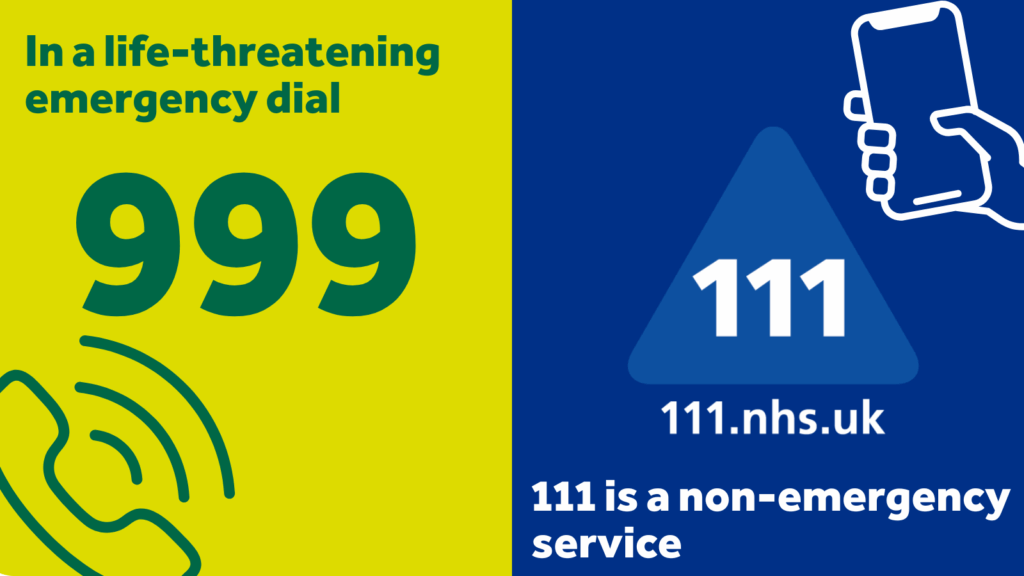
What is 999 for?
999 should only be used in emergency situations. If someone needs help very fast, for example, if they are seriously ill or not breathing – or in immediate danger.
What is 111 for?
You can use the NHS 111 service by either going to 111.nhs.uk or by calling 111. You should use 111 if you are not facing a life-critical situation but still need medical help right now. It may be that someone has a minor injury, they feel unwell, or they need advice about a current condition.
The key thing to consider if you’re wondering when to call 111 or 999, is whether the person is in immediate danger. If they are not, 111 is the correct service to use.
What happens when you call 999 or 111?
Both 999 and 111 lines are operated 24 hours a day, 7 days a week, 365 days a year.
When you call 111, one of our trained health advisors will answer your call and you will answer a series of questions so that you can be directed to the most appropriate service for your symptoms. This could be an urgent treatment centre, an out-of-hours GP, a pharmacist or you may be able to look after yourself safely at home.
What happens when you use 111?When you call 999 you will be asked if you need the ambulance service, police or fire service. You will then be connected to our emergency operations centre where we will ask you some questions about the patient and your location. This is so that we’re able to start arranging help straight away.
They will ask you who is in danger or who is ill and you will need to give them a clear description of what has happened. The call handler will want to know your exact location, including a house number and street name or any landmarks.
What happens with your 999 call?How to help kids learn the difference
Games are a great way to help children understand the difference between when to call 111 and when to call 999.
Playing with soft toys and old mobile phones in a role-play situation is also a good way for children to realise which number they would need to call.
You could then act out scenarios, such as, “Dinosaur has fallen off the shelf and now he isn’t moving or answering me!” The aim would be for the child to act as the caller to 999 and tell the NHS operator what has happened.
You could get them to play the ‘emergency or not’ game. Simply create your own cards by drawing pictures of scenarios.
Ensure some show 999 emergencies (such as, someone falling from height) and some are 111 situations (I have a sore tummy, and I feel sick).
Read out each scenario card. The child decides which action zone the scenario belongs to (999 or 111 pile) and places the card there. You can discuss their choices, explaining why each situation fits a particular number.
Visit our Ambulance Academy
Our Ambulance Academy is for children, young people, teachers and adults and is full of information to teach children about emergencies and first aid, including a great 999 quiz, among the activities to test your skills.
There’s also useful information about jobs in the ambulance service and how to give CPR to save a life.
Our free resources for teachers and adults will support pre-schoolers to find out about people who are there to help us, whilst our first aid tips and lesson plans for primary and secondary school pupils will support learning in health education.